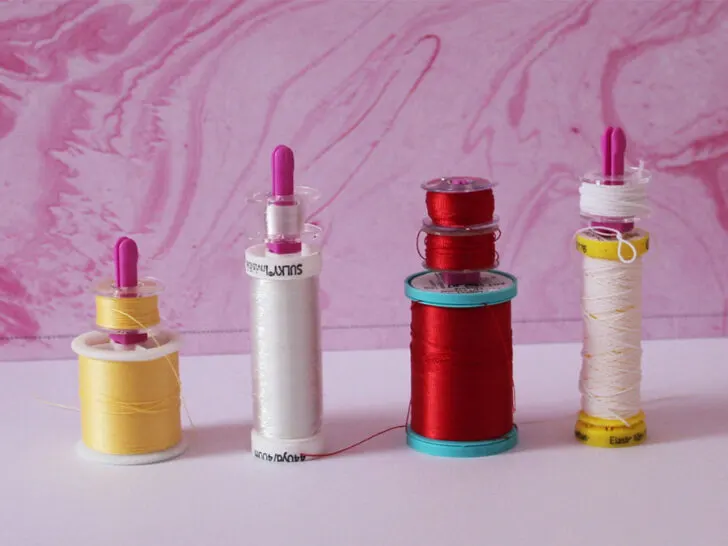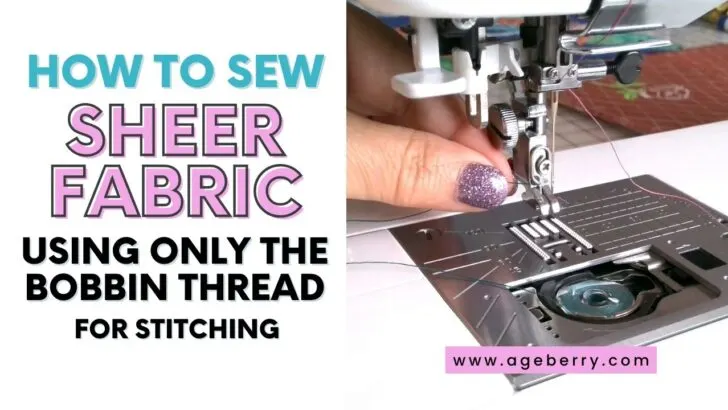Are you confused about the bobbin thread? With so much to consider—including types of bobbins and the issues that can arise from using different kinds of threads—it’s no wonder you have lots of questions about this key part of your sewing process. I totally understand if you’ve been wondering what kind of bobbin thread to use for certain fabrics, or how much thread a bobbin holds. In this post, I’ll answer some of the most frequently asked questions about bobbin thread and help get you on track with creating successful projects.
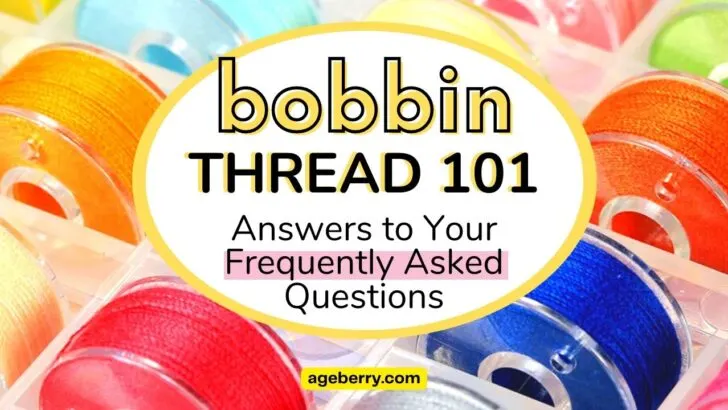
What Is A Bobbin Thread?
A bobbin thread is a thread that is wound onto a small spool-shaped object called a bobbin. Bobbin threads are used in sewing machines to create stitches on the underside of fabric. This thread is essential because it helps to create a strong, durable stitch that holds the fabric together. Bobbin threads are often different from top threads in terms of color, thickness, and fiber. Before you can sew, you have to load the bobbin with thread.
What Is Bobbin Thread Used For?
Bobbin thread is used in sewing machines to create stitches on the underside of fabric. When the bobbin is in the machine, the bobbin thread creates a series of loops, catching the upper thread on the sewing machine. These two threads together make a strong, smooth stitch for holding the fabric together. The bobbin thread loops create a neat set of stitches on the backside of the fabric.
What Is The Difference Between Bobbin Thread And Regular Thread?
Regular thread is the main kind of thread that you will use in your sewing. You can use the same thread for the bobbin as for the top thread.
However, some people buy specific bobbin thread in white for light colored fabric or in black for dark colored fabric. Usually, specific bobbin thread is made of rayon or polyester for smooth stitching, and it is lighter in weight than typical sewing thread.
Note: Some of the links on this page are affiliate links. This means I will receive a commission if you order a product through one of my links. I only recommend products I believe in and use myself.

Simthread 2 Bobbin Thread for Sewing and Embroidery Machine
If you’re using a fancy metallic thread, you probably want to choose something different for the bobbin. Or if you’re using a heavier thread for topstitching on jeans, a different bobbin thread can help the seam not to be as bulky.
✅ Related tutorial: Metallic Thread For Embroidery And Sewing: Top 10 Tips You Must Know
What Thread Is Best For Bobbins?
Deciding what thread is best for the bobbin thread depends on the type of sewing project. For ordinary sewing, matching the bobbin thread with the top thread is perfectly acceptable. But for machine embroidery or fancy topstitching, you might want to use a lighter weight polyester thread for your bobbin thread.
From my experience, the best thread for bobbins is usually a good-quality polyester thread. This is needed because it creates less lint and friction, which helps the sewing machine run smoothly. It is usually important to match the color of the bobbin thread to the top thread for the best results.
But sometimes cotton thread is best, though, for items that will be microwaved or ironed on high heat, since polyester might melt in the heat.

37Pcs Premium Bobbins Set with 36-Color Sewing Threads and I Scissors
Can You Use Any Thread For The Bobbin?
Yes, any thread can be used for the bobbin, including regular sewing thread, embroidery thread, and even specialty threads like metallic or elastic threads. This allows for creative experimentation in sewing and embroidery projects. For example, in bobbin work, a fancy embellishment technique, some kinds of yarns or even narrow ribbons can be used for the bobbin thread to create unique and beautiful designs.
However, it is important to note that the quality of the thread can affect the outcome of the project, so it is recommended to use high-quality threads for the best results.
✅ Related tutorial: Sewing thread types and uses
How Do You Identify A Bobbin Thread?
Have you ever looked at a seam and wondered which thread was the bobbin thread? Well, identifying the bobbin thread can be tricky because the stitches made by the bobbin thread are not visibly different from the top thread. However, the bobbin thread runs on the underside of the fabric, or on the wrong side of the fabric, while the top thread runs on the right side of the fabric. It helps to ensure that the fabric is properly secured and that the stitches are even and strong.
Can You Sew Without Bobbin Thread?
No, it is not possible to sew without a bobbin thread. The bobbin is an essential part of creating a machine-stitched seam. The top thread and the bobbin thread work together to create the loops that form the stitches. Without the bobbin thread, the loops can not be created, and the stitching will not hold the fabric together.
Does Bobbin Thread Have To Be The Same Weight As Top Thread?
No, the bobbin thread does not have to be always the same weight as the top thread. While it is sometimes beneficial to use the same weight thread, it may be necessary to use a different thread weight when working with heavyweight, embroidery or metallic top threads.
Using a lighter weight thread in the bobbin can help prevent bulk and ensure smooth stitching, resulting in even and strong stitches. Examples of projects where different weights of top and bobbin thread can be used include quilting, machine embroidery, and decorative stitching. It is important to experiment with different thread combinations to find the best match for each project.
What Size Thread For Bobbins?
The size of thread used for bobbins can vary depending on the project and the type of top threads being used. For many projects, it is possible to use the same size thread for the bobbin as for the top thread. For example, if you’re using weight 40 top thread, you can use weight 40 in the bobbin.
However, if you’re using a heavier top thread, it may be necessary to choose a finer bobbin thread to avoid bulk in your seams. In this case, using a weight 30 top thread and a weight 40 bobbin thread may be a good option.
For embroidery projects, it is recommended to use even thinner thread, such as weight 60 or even 90, as they work well with embroidery threads.
Does The Bobbin Thread Matter?
Yes, the bobbin thread is an essential part of making a seam, as it works together with the top thread to create the stitches that hold the fabric together.
However, it is not always necessary to match the color of the bobbin thread to the top thread. This is because the bobbin thread is only visible on the backside of the seam, while the top thread is visible on the right side of the fabric.
For example, when doing machine embroidery, you may choose to use a white color thread in the bobbin, even if you are using different colors for the top thread, as the bobbin thread will not be visible on the right side of the fabric.
It is important to ensure that the bobbin thread is of good quality and properly wound and threaded, as this can affect the quality of the stitching and the overall look of the finished project.
Does Bobbin Thread Size Matter?
Yes, the size of the bobbin thread can matter. While it is possible to use a lighter weight thread on the bobbin than what is used for the top thread, it is not recommended (for regular sewing and quilting projects) to use a heavier thread on the bobbin than what is used for the top thread. This is because using a heavier thread on the bobbin can cause stitching problems that can ruin the overall look of the finished project.
For example, if you are using a weight 40 top thread, you may choose to use a weight 60 bobbin thread. However, if you use a weight 30 thread on the bobbin with a weight 40 top thread, it can cause the stitching to become uneven and cause the fabric to pucker.
But there is an interesting embroidery technique called “bobbin work”. It involves using heavier thread in the bobbin than the top thread. This technique creates a unique and textured look for embroidery projects, making them stand out from traditional embroidery.
Can You Use Heavy Duty Thread In A Bobbin?
Yes, heavy duty thread can be used in the bobbin. In fact, there is a style of embellishment called “bobbin work” that features heavy duty threads and even ribbons in the bobbin. This unique technique creates fancy stitching on the underside of the fabric. Bobbin work can be used to create intricate designs on clothing, quilts, and other fabric items. It is important to note that when using heavy duty thread in the bobbin, it will be necessary to adjust the settings on the embroidery machine to make it work.
Does It Matter What Color Your Bobbin Thread Is?
The color of the bobbin thread can matter depending on the project you are working on. If you are making a garment and you don’t want the bobbin thread to show, it is important to use a bobbin thread color that matches the top thread. This is because the bobbin thread can sometimes be visible on the right side of the fabric, if the tension is not set correctly.
However, if you are not too concerned about the bobbin thread showing through, you can use any color in the bobbin. For example, if you are sewing a quilt, you may choose to use a neutral color thread in the bobbin, even if you are using different colors for the top thread, as the bobbin thread will not be visible on the quilt top. It is important to note that when using a different color in the bobbin, it is necessary to check the tension to ensure that the differently colored bobbin thread doesn’t show through in the finished seam.
Do You Use Quilting Thread In The Bobbin?
Yes, you can use any kind of thread in the bobbin, including quilting thread. However, it is important to sew a test piece and check the seam to ensure that the tension and other sewing machine settings are correct. If the tension is not set properly, it can cause the stitches to become uneven or the fabric to pucker. For example, if you are using a quilting thread in the top thread, you may choose to use a matching or neutral color quilting thread in the bobbin.
What Is The Difference Between 90 Wt And 60 Wt Bobbin Thread?
The difference between 90 wt and 60 wt bobbin thread is the thickness of the thread.
Thread weight numbers are totally counterintuitive! The larger the number, the finer the thread and the smaller the number, the heavier the thread. So, in this case, 90 weight thread is thinner and finer than 60 weight thread. Confusing? Yes, indeed! But that is the way that it works.

Set of 2 Huge Bobbin Thread for Sewing and Embroidery
What To Do When You Run Out Of Bobbin Thread?
If you run out of bobbin thread in the middle of a sewing project, there is no need to panic. Simply cut the top thread and remove the empty bobbin from the sewing machine. Then, replace the empty bobbin with a full one and re-thread the machine.
It’s no fun when you’re working on a project and suddenly realize that you’ve run out of bobbin thread. This is especially frustrating when you’re topstitching an almost finished project and realize that you’ve sewn for nothing. That’s why many sewists believe that the best feature of a modern sewing machine is an alert that notifies the user when the bobbin thread is running low. Check out my short YouTube video where I’m showing my sewing machine with an alert for low bobbin thread.
Make sure that the bobbin is properly wound and threaded, and that the tension is set correctly before resuming sewing.
✅ Related tutorial: Sewing machine tension guide: everything you need to know about the bobbin tension
If the machine stopped sewing when the bobbin thread ran out, it may be necessary to move the needle back a few stitches and then resume sewing. This can ensure that the seam is even and there are no gaps or loose threads.
It is always a good idea to keep extra bobbins on hand, especially if you are working on a larger project. This can help prevent interruptions in your sewing and ensure that you can complete your project without any delays.
✅ Related tutorial: How to thread a bobbin
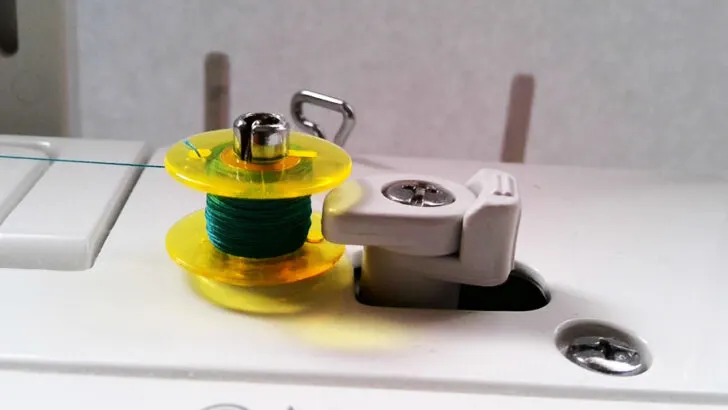
Running out of bobbin thread is a common occurrence in sewing, but it is easily remedied by replacing the empty bobbin and re-threading the machine.
How To Thread A Bobbin By Hand?
Threading a bobbin by hand can be useful when you are using special types of thread, such as wolly nylon thread or elastic thread. You can also do it if your automatic bobbin winder is broken.
Thread the end of the thread through the small hole in the top of the bobbin and wrap it around the bobbin a few times. Hold the thread tail in place and wind the thread onto the bobbin. It is important to wind the thread evenly and not too tightly to prevent the thread from breaking. Also, don’t stretch the thread. Don’t overfill the bobbin either, or you might run into problems as you sew. Overall, while threading a bobbin by hand may take a bit more time and effort than using an automatic bobbin winder, it can be a useful skill to have when working with special types of thread.
What Is 90 Wt Bobbin Thread Used For?
90 wt bobbin thread is a very fine thread used for embroidery machines. It is much thinner than regular sewing thread. It balances needle thread and prevents tension problems and thread breakage. It is strong, durable, and made of 100% polyester. It won’t shrink, break, or fray.
What Color Is Bobbin Thread For Embroidery?
Bobbin thread for embroidery can be any color, but it is common to use white and black threads. You can buy pre-filled bobbins that are plain white or black, and it doesn’t matter if the color doesn’t match the top thread. It is typically used on the underside of the fabric, so it does not need to match the top thread.
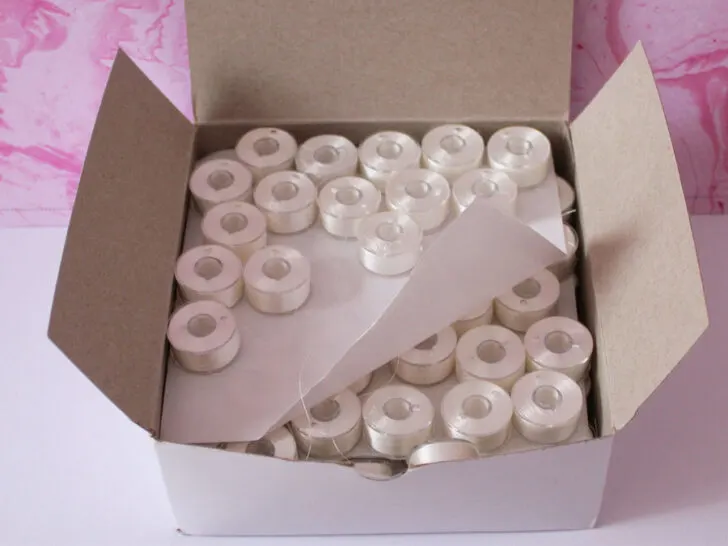
However, it is important to use embroidery bobbin thread weight 60 or 90, which is finer and smoother than regular sewing thread. It is lighter in weight, ensuring that the embroidery design doesn’t become too thick or bulky.
How Much Thread Does A Bobbin Hold?
The amount of thread a bobbin can hold depends on the size and type of bobbin. Different sewing machines use different bobbins, and some bobbins may hold more or less thread than others. For example, a Class 15 bobbin typically holds around 50 yards of thread, while a Class 66 bobbin can hold up to 70 yards of thread. It’s important to check your sewing machine manual to find out what type of bobbin your machine uses and how much thread it can hold. Overfilling the bobbin can cause it to jam or break, while underfilling can cause the thread to run out too quickly.

How To Get Bobbin Thread Up Through Machine?
After you’ve loaded your bobbin into the machine, you probably want to bring the bobbin thread up through the feed dogs to the top of the machine. To do this, hold the upper thread with your finger and gently use the machine wheel to make the needle go down and then up. The upper thread should catch the bobbin thread in a loop. Pull the threads toward you and you will make two long tails. Direct these tails toward the left back side of the machine and you are ready to sew. Picking up the bobbin thread can help you avoid tangles under your fabric as you begin to sew a seam.
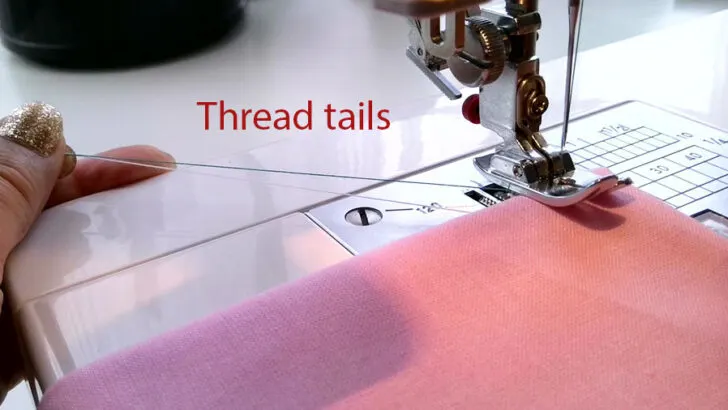
Should Bobbin Thread Go Clockwise Or Counter?
The bobbin in many sewing machines should be inserted so that it rotates counterclockwise when you pull the thread. However, certain machines may work differently, so read your manual to make sure you are inserting it into the machine correctly. If you don’t have your manual, a quick Google search can give you the information that you need.
What Bobbin Thread To Use For Machine Embroidery?
Check your machine manual to see if there is a recommendation for your machine. However, if there’s not, polyester is an excellent choice because it feeds smoothly through the machine. Cotton thread is best, though, for items that will be microwaved or ironed, since polyester might melt in the heat.
Bobbin Thread Bunching
Bunching thread happens to everyone. First, completely rethread the sewing machine, making sure that you thread the machine with the presser foot up. If that doesn’t fix the problem, change the sewing machine needle if you’ve used it for awhile. Also, you can tinker with the tension to see if that helps. Finally, change your thread. Using poor quality thread can make for frustrating sewing and bunching of your bobbin thread.
✅ Related tutorial: Sewing machine thread bunching: Top 10 reasons (+ How to fix it)
Bobbin Thread Not Catching
Don’t freak out if this happens to you! Most of the time, it’s a simple fix. First, change your sewing machine needle and rethread the machine. The tension could be off or maybe you are sewing fabric that is too heavy for your needle. If you’ve tried all of these things, you may need a professional sewing machine technician to take a look at the machine.
✅ Related tutorial: Troubleshooting Common Sewing Machine Problems (+ Solutions)
Why Does My Bobbin Thread Keep Breaking?
Your tension may too tight if your bobbin thread keeps breaking. You should also check that the machine is threaded properly and the bobbin is inserted into the machine correctly.
✅ Related tutorial: 20+ Reasons Your Sewing Machine Thread Keeps Breaking (+ Solutions)
How Will You Adjust Tension On Bobbin Thread?
There’s a small screw in the bobbin case for adjusting the tension on the bobbin. You can use a screwdriver to adjust this. My article Sewing machine tension guide: everything you need to know about the bobbin tension has a lot more detail about bobbin tension.
Should Bobbin Thread Show On Top?
No, if you see the bobbin thread on the top of the seam, the tension is off. The loops of thread should meet in the middle of the fabric.
✅ Related tutorial: Sewing Machine Tension Adjustment
Should Bobbin Thread Be Tight?
The bobbin thread should not be too loose or too tight, but it should be, like Goldilock’s porridge, just right. If you can see the bobbin thread loops on the top of the seam, it’s too loose. And if there are large loops on the underside of the fabric, it is too tight.
What To Do If Bobbin Thread Is Loose?
The bobbin thread is too loose if it is making loops on the top of the fabric. First, rethread the machine from scratch and sometimes this will fix the problem. If it does not fix it, you can change the tension on the bobbin. Tighten it by turning the tiny screw on the bobbin case a wee bit clockwise with a screwdriver. Test sew on a scrap of fabric and adjust as needed.
Have you ever wondered if it’s possible to sew with only bobbin thread, without using the top thread? It might sound unusual, but it’s a technique that can come in handy when working with sheer fabrics or sewing darts. In this tutorial, I’ll show you how to sew sheer fabric using only bobbin thread for stitching. It’s a unique and interesting technique that’s sure to surprise your fellow sewists. So, click on the link and check the video tutorial!
Did you find this tutorial helpful? If so, save this pin (see below) on your sewing board so you can come to the article later when you need this information on bobbin thread for sewing, and follow me on Pinterest for more tips, tutorials, and inspiration!
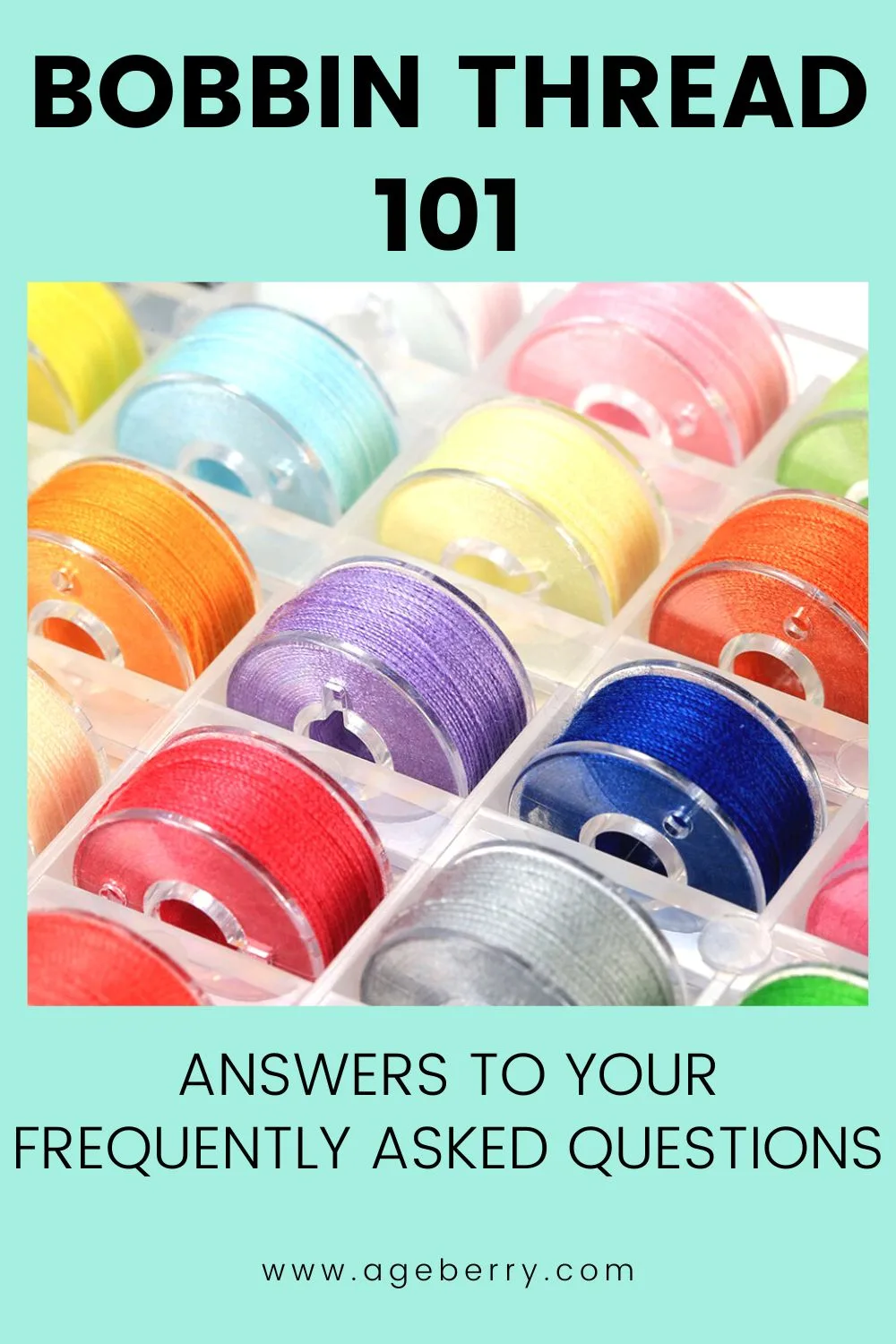
latest posts
- Ever Tried This on Your Serger? This Differential Feed Feature Will Amaze You
- Ditch My Sewing Machine? Not in This Lifetime!
- Adorable DIY Needle Book | Easy Tutorial for Beginners
- Master the Seam Ripper: Your Ultimate Guide to Precision Stitch Removal
- Think You Know Zippers? This Installation Guide Might Surprise You
- Why Does Your Seam Ripper Have a Red Ball? Discover Its Purpose!
- Topstitching Troubles? This Simple Trick Will Turn It Around Instantly!
- How to Sew Shirring: A Step-by-Step Guide to Elastic Thread Gathering
- Are Self-Threading Needles Really Useful?

